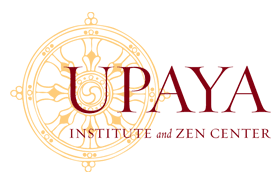
From Upaya Zen Center, this is an 8-part series of podcasts featuring B Alan Wallace, one of the foremost scholars of Tibetan Buddhism. The series of talks is focused on the meditative practice of “settling the mind in its natural state,” which is foundational for both the Mahamudra and Dzogchen traditions of Tibetan Buddhism. These practices are centrally focused on realizing the nature of consciousness, occupying a middle space between shamatha (the cultivation of highly focused attention) and vipashyana (the cultivation of contemplative insight). "Settling the mind" consists essentially in focusing single-pointedly on the space of the mind and on whatever thoughts, images, and other mental events arise within that field of experience.
Enjoy!

Settling the Mind in its Natural State (Part 1)
Speaker: B. Alan Wallace
Recorded: Friday May 2, 2014
Podcast: Play in new window | Download
Series Description: The meditative practice of “settling the mind in its natural state” is foundational for both the Mahamudra and Dzogchen traditions of Tibetan Buddhism, which are centrally focused on realizing the nature of consciousness. This practice lies right at the cusp between shamatha (the cultivation of highly focused attention) and vipashyana (the cultivation of contemplative insight). It consists essentially of focusing single-pointedly on the space of the mind and on whatever thoughts, images, and other mental events arise within that field of experience. The quality of mindfulness cultivated in this practice is focused, spacious, discerning, and non-reactive. Through such practice, the activities of the mind gradually subside so that the mind comes to settle in its “natural state,” which manifests three core qualities: bliss, luminosity, and nonconceptuality. We explore this practice with teachings and commentary from B. Alan Wallace, as well as experientially through guided meditations and daily group practice.
Episode Description: In this first session of the program, Alan introduces participants to the practice of “settling the body, speech, and mind in their natural states” through a guided meditation. He then discusses his views of what “practicing Dharma” and being “on a path” to liberation mean in terms of a long-term spiritual aspiration. He also touches briefly upon the idea of continuity of consciousness. Finally, Alan introduces and delves into the root text from which he will teach during the program: Taking Aspects of the Mind as the Path, from the Sharp Vajra of Conscious Awareness Tantra, by Dzogchen master Dudjom Lingpa (19th C).
B. Alan Wallace began his studies of Tibetan Buddhism, language, and culture in 1970 at the University of Göttingen in Germany and then continued his studies over the next fourteen years in India, Switzerland, and the United States. Ordained as a Buddhist monk by H. H. the Dalai Lama in 1975, he has taught Buddhist meditation and philosophy worldwide since 1976 and has served as interpreter for numerous Tibetan scholars and contemplatives, including the Dalai Lama. After graduating summa cum laude from Amherst College, where he studied physics and the philosophy of science, he returned his monastic vows and went on to earn his Ph.D. in religious studies at Stanford University. He then taught for four years in the Department of Religious Studies at the University of California at Santa Barbara, and is now the founder and president of the Santa Barbara Institute for Consciousness Studies. He has edited, translated, authored, and contributed to more than thirty books on Tibetan Buddhism, medicine, language, and culture, and the interface between science and religion.”
Here are the rest of the episodes in this series.
- Settling the Mind in its Natural State (Part 2a)
- Settling the Mind in its Natural State (Part 2b)
- Settling the Mind in its Natural State (Part 3a)
- Settling the Mind in its Natural State (Part 3b)
- Settling the Mind in its Natural State (Part 4)
- Settling the Mind in its Natural State (Part 5a)
- Settling the Mind in its Natural State (Part 5b, last part)

No comments:
Post a Comment